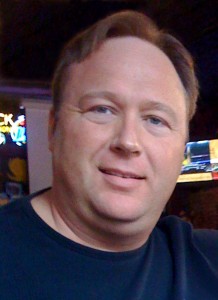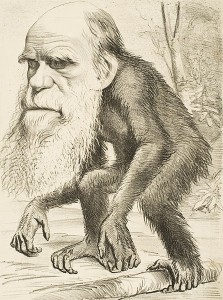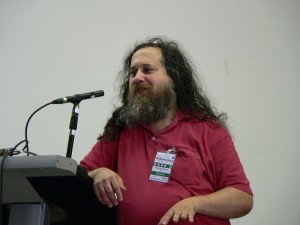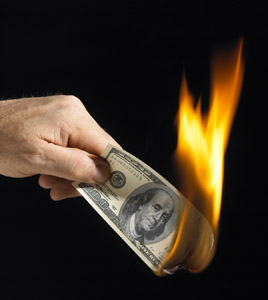You had to dodge them, which is why the Brooklyn Dodgers were so named. (Thanks Live Leak.)
You are currently browsing the archive for the Urban Studies category.
Ice Stove: A device shown to be practical by Dr. Alexander Graham Bell to furnish cool air for households, etc. Into a large box 200 pounds of ice are fed twice every week. Air pipes lead from the ice box and convey the chilled air to where it is needed, the flow being regulated by an electric fan.
Iconoclasts: Originally, an Eastern sect of the eighth and ninth centuries, whose object was to prevent the worship of, and to destroy, images used in religious rites. The term has been applied in modern times to enemies of religious beliefs generally.
Inebriety, Board of: Created September, 1911, in New York City, to undertake a reform of dealing with drink victims, the first of the kind ever created. Its method consists of “moral suasion” and providing proper environment, instead of inflicting punitive measures. A distinction is made between between first and second offenders–the former being put on probation, the latter being sent to a farm. The cost to the city will be $875,000 annually, with $200,000 for maintenance.
Infant Schools: Pestalozzi was the first teacher of modern times who systematized infant instruction, and in the early part of the present century his system, improved and developed by alter writers, reached its culmination. Infant schools were established throughout Europe, but were abandoned after a few years, as they were found to do more injury than good. In 1837, Frederick Froebel introduced a new method of infant training called the Kindergarten (children’s garden).
Insanity: Disordered or defective reason, arising from heredity, malformation of the skull, imprudence, intemperance, or sudden shock. It is classed as Melancholia, with or without delusions and excitement; Mania, often accompanied by frenzy; Ecstasy or religious excitement; Stupor, dullness, dementia; Degeneration of brain and nerve, with weakened moral sense, impulsive and unreasonable action, and hysteria; Weakness of brain caused by generative excess, syphilis, alcohol and old age, Constitutional Imbecility and idiocy. Insanity, in some of its forms, is the most agonizing of maladies, and cause the greatest distress to the family. It is relieved slowly, if at all, by wholesome food, cleanliness, sleep, mental and physical occupation, moderate exercise and wholesome amusement. The total annual cost of caring the insane in the United States is in the neighborhood of $50,000,000 per year. Insanity rates for various industrial occupations show that the rate per cent for shipwrights was 5.8, watchmakers 8.9, builders 7.7, tailors 11, bootmakers 10.5, bakers 6.8, tobacconists 6.0, brewers 6.1, inn-keepers 19.1. Brokers, agents, etc., have a rate of 12.4, bankers 9.3. commercial travelers 15.5, and warehousemen 17.1. Railroad men suffer much less from insanity than seamen. Their rate is 6.9, that of seamen 16.0. General laborers have the high rate of 39.1.
•Taken from the 1912 Standard Illustrated Book of Facts.
See also
The opening of Alexander Zaitchik’s recent Rolling Stone article about radio ranter Alex Jones, who is both insane and insanely popular:
“It’s just past 9 a.m. when Alex Jones pulls his Dodge Charger into a desolate parking lot in Austin. From the outside, the squat, single-story office complex that Jones calls his ‘command center’ resembles a moon base surrounded by fields of dying grass. But inside, blinking banks of high-tech recording gear fill the studio where he broadcasts The Alex Jones Show, a daily talk show that airs on 63 stations nationwide. Jones draws a bigger audience online than Rush Limbaugh and Glenn Beck combined — and his conspiracy-laced rants make the two hosts sound like tea-sipping NPR hosts on Zoloft.
A stocky 37-year-old with a flop of brown hair and a beer gut, Jones usually bounds into the studio, eager to launch into one of his trademark tirades against the ‘global Stasi Borg state’ — the corporate-surveillance prison planet that he believes is being secretly forged by an evil cabal of bankers, industrialists, politicians and generals. This morning, though, Jones looks deflated. Five days ago, a mentally disturbed 22-year-old named Jared Loughner opened fire on a crowd in Tucson, Arizona, killing six and seriously wounding Rep. Gabrielle Giffords. Loughner was reported to be a fan of Loose Change, a film Jones produced that has become the bible for those who believe 9/11 was an inside job.”
••••••••••
Alex Jones believes Magellan is way cooler than Justin Bieber, which is true:
Tags: Alex Jones, Alexander Zaitchik
Someone to find the clicker for you. (Thanks Fast Company.)
A body couldn’t walk down the street in the 1880s and 1890s without some sharp tongue cracking wise. Insulting remarks were a part of life, but they weren’t always tolerated, as the following quartet of brief stories from the Brooklyn Daily Eagle illustrates.
••••••••••
“Remarks Too Personal” (August 22, 1899): “Philip Reilly, a bartender at 63 Columbus street, and living at 143 Baltic street, was charged with assault this morning in the Butler street court. A man named Morrissey went last evening into the saloon where Reilly is employed and in the course of an argument incidentally made the remark to the bartender that he (Morrissey) had a monkey at home that was a better looking creature than Reilly. Now while it is true that bartenders have and are expected to put up with a great deal from patrons, this was too much for Reilly. There was a running jump and a high leap across the bar and the next thing the people in the place knew there was moaning. Morrissey was in the midst of the fight and regretted his Darwinian expression. Reilly, it is said, gave him a lesson in manners which he will not soon forget. When Morrissey had explained to Magistrate Brenner this morning about how the trouble arose, the court seemed to think that Reilly was not altogether to blame and discharged him.”
••••••••••
“Martin Pelz Horsewhipped by Mrs. Frank Ebert” (July 7, 1896): “Martin Pelz of Fort Hamilton was soundly horsewhipped by Mrs. Frank Ebert of 183 Twelfth street, Brooklyn, yesterday, on the corner of Ninety-fifth street and Fifth avenue. Mr. Ebert, the husband, pinioned Pelz’s arms and held him fast while the infuriated woman rained the blows thick and fast. For fully five minutes Pelz was compelled to stand the punishment and though he struggled, he could not get free from the clutches of the husband. Though a crowd gathered no attempt was made to stop the woman. Mrs. Ebert said very little while inflicting the punishment and when she got tired and had satisfaction for her injured feelings, both she and her husband bounded on a Nassau car and rode away. Later in the day they were arrested on a warrant issued by Justice Rhodes and both were in court this morning.
Mr. Pelz lives on Ninety-fifth street, between Fort Hamilton and Fifth avenues, and he has for a neighbor Mrs. McCarthy. It appears on Sunday Mrs. Ebert visited Mrs. McCarthy’s place, but did not find her at home. Miss Mary McCarthy, a daughter, was in, and both she and Mrs. Ebert made a friendly visit to the Pelz household. In the evening Mrs. Pelz visited Mrs. McCarthy and told her not to take Mrs. Ebert to her house again, as her husband did not consider her a fit associate for his wife. Mrs. McCarthy lost no time is communicating what she heard, and the horsewhipping yesterday was the outcome.”
•••••••••••
“A Quick Cure By the Water Method” (August 22, 1884): “Late last night Timothy Crosby made some insulting remarks to his landlady, Mrs. Hogan, of No. 100 John street. As Timothy persisted in his annoying behavior she tried the effect of the water cure on him. Picking up a saucepan of boiling water she threw the whole contents of it over him, and this heroic treatment had the desired result. He was scalded on several portions of his body and was removed to the Homeopathic Hospital. He refused to make any complaint against Mrs. Hogan.”
••••••••••
“The Red Headed Girl Will Surely Turn” (March 10, 1889): “This morning is police court four young men, named Samuel Allen, Joseph Derry, Mark Ashford and Martin Derry, were charged by Miss Hannah Hartnett with making rude and insulting remarks in her hearing. Miss Hannah is a good looking young lady, but her auburn hair has proved to be the source of much annoyance to her. She found it almost impossible to go on the street unless she was insulted by boys on the corners asking, ‘Where’s the white horse?’ and making other rude remarks. She stood it as long as she could, and then had the above named defendants arrested. They were fined $5 each.”
Canadian photographer Edward Burtynsky takes gorgeous photos of environmental ugliness, the indiustrial ruins of abandoned California oil fields and Chinese landfills stuffed with discarded computer motherboards. There’s an excellent documentary about his work if you’d like to see more.
From Burtynsky’s site: “Nature transformed through industry is a predominant theme in my work. I set course to intersect with a contemporary view of the great ages of man; from stone, to minerals, oil, transportation, silicon, and so on. To make these ideas visible I search for subjects that are rich in detail and scale yet open in their meaning. Recycling yards, mine tailings, quarries and refineries are all places that are outside of our normal experience, yet we partake of their output on a daily basis.
These images are meant as metaphors to the dilemma of our modern existence; they search for a dialogue between attraction and repulsion, seduction and fear. We are drawn by desire – a chance at good living, yet we are consciously or unconsciously aware that the world is suffering for our success. Our dependence on nature to provide the materials for our consumption and our concern for the health of our planet sets us into an uneasy contradiction. For me, these images function as reflecting pools of our times.”

"Everyone is looking for Potassium Iodide with the recent nuclear activity in Japan." (Image by Мясников.)
Potassium Iodide – Anti Radiation Pill – $100 (Brooklyn – Manhattan )
I have a bottle of Potassium Iodide 65mg capsules #28 (a two week supply)
Everyone is looking for Potassium Iodide with the recent Nuclear activity in Japan
Potassium Iodide (KI)
What is Potassium Iodide (KI)?
Potassium iodide (also called KI) is a salt of stable (not radioactive) iodine. Stable iodine is an important chemical needed by the body to make thyroid hormones. Most of the stable iodine in our bodies comes from the food we eat. KI is stable iodine in a medicine form. This fact sheet from the Centers for Disease Control and Prevention (CDC) gives you some basic information about KI. It explains what you should think about before you or a family member takes KI.
What does KI do?
Following a radiological or nuclear event, radioactive iodine may be released into the air and then be breathed into the lungs. Radioactive iodine may also contaminate the local food supply and get into the body through food or through drink. When radioactive materials get into the body through breathing, eating, or drinking, we say that “internal contamination” has occurred. In the case of internal contamination with radioactive iodine, the thyroid gland quickly absorbs this chemical. Radioactive iodine absorbed by the thyroid can then injure the gland. Because non-radioactive KI acts to block radioactive iodine from being taken into the thyroid gland, it can help protect this gland from injury.
Natural and man-made.
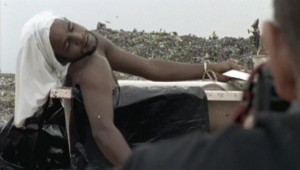
Picker and union leader Tiao recreates “The Death of Marat,” with a tub recovered from the landfill.
Although it’s not in the class of Agnes Varda’s great 2000 documentary, The Gleaners & I, Lucy Walker’s look at life in the landfills of Rio de Janeiro has some illuminating points to make about forgotten people who make their way by recycling society’s detritus. Although it resolutely aspires to be a feelgood film, Waste Land is surprisingly thornier and more bothersome than Varda’s modern classic.
Even though successful New York-based artist Vik Muniz grew up in a low-income Brazilian community, he doesn’t expect to find a genteel sort of people when he resigns to spend a couple of years photographing pickers who live and work in Jardim Gramach, the largest landfill in the world, which is located on the outskirts of Rio. Because of gang wars in favelas nearby, the trash heap is known to be a dumping ground for dead bodies as well as the plastic that the pickers turn in for pennies on the pound.
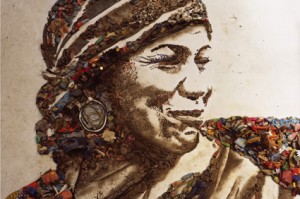 It comes as some surprise to the artist then that the workers are often quite profound. Some of them collect discarded books from the trash heaps in the hopes of starting free libraries in their poor neighborhoods and are able to quote Machiavelli, Marat and Nietzsche. He probably didn’t expect to find so many workers who could speak so eloquently to the environmental benefits of their drudgery. And he likely didn’t think he would meet a picker like Tiao, a determined young man who formed a union of landfill workers even though his own family told him it was folly. As a whole, the pickers claim to be happy with their work, even as they live in rat-filled shacks and eat food they find in the garbage. They are dignified, they are proud, they are resolute.
It comes as some surprise to the artist then that the workers are often quite profound. Some of them collect discarded books from the trash heaps in the hopes of starting free libraries in their poor neighborhoods and are able to quote Machiavelli, Marat and Nietzsche. He probably didn’t expect to find so many workers who could speak so eloquently to the environmental benefits of their drudgery. And he likely didn’t think he would meet a picker like Tiao, a determined young man who formed a union of landfill workers even though his own family told him it was folly. As a whole, the pickers claim to be happy with their work, even as they live in rat-filled shacks and eat food they find in the garbage. They are dignified, they are proud, they are resolute.
They are not completely honest, however, even with themselves. When a group of pickers is hired to work with Muniz for two weeks in his temporary studio in Brazil, helping him reproduce their photographs in large-scale sculptures with the aid of trash and recyclables, most of them quickly realize that they never want to go back to Jardim Gramach. After such beauty, how can they return to the refuse? It’s easy to be amazed by these workers, their industry and ingenuity, but no one should make the mistake of idealizing them or a life that is clearly damaging to body and soul. As Joan Didion wrote, “We tell ourselves stories in order to live.” Sometimes those stories are laced with a self-deception necessary for survival.•
On Southwest Airlines, which used to have hostesses in hot pants.

"Appo has but one eye, the other having been shot out by the two North Carolinians, Curran and Hogshead."
George Appo had a mug made for a mug shot, and his actions didn’t belie his vicious visage. The grainy but great photo above, which was taken in 1894, shows the prolific pickpocket looking a little worse for the wear–and there was plenty of wear. Born into a crime family, Appo was arrested frequently for an assortment of misdemeanors and felonies. Even when he tried to go straight, things ended up crooked. An excerpt from an 1899 New York Times article about the rogue’s life:
“Appo’s career of crime began when he was sixteen years old, at which time he was sent to prison for two years and six months for picking pockets. Nine months after his release he was sent back for the same term for a like offense. After serving two other terms for theft, making four in all, he went into the ‘green goods‘ business with John McNally, known as the ‘Green Goods King.’ His story of how this business was conducted was one of their most dramatic features of the Lexow investigation and put him on record as one of the country’s most picturesque criminals.
In September, 1884, Appo had his throat cut under circumstances which pointed to an assault on him by agents of the police. This charge was made by Counsel Goff of the Lexow committee.
Appo, on April 8, 1895, attempted to stab Policeman Reiman at the corner of Sixth Avenue and Twenty-eighth Street. He escaped, but was caught in Buffalo, brought back, tried, convicted, and sent to prison for six months.
After his release Appo claimed that he was hounded because of his connection with the Lexow inquiry, and that, in spite of desire to reform, he was denied honorable employment. He tried to lecture on crime and criminals in Buffalo, but was refused a permit.
On July 10, 1896, while in a drunken frenzy, Appo stabbed John Atwood, a reporter, at the corner of Mott Street and Chatham Square, mistaking him for another man. He was tried before Justice McMahon, and, being adjudged insane, was sentenced to the Matteawan Hospital.
Appo has but one eye, the other having been shot out by the two North Carolinians, Curran and Hogshead, whom he lured to Poughkeepsie by a ‘green-goods’ bait.”
Tags: George Appo
Owsley Stanley was the “King of LSD” in the Bay Area during the Summer of Love, dealing a decidedly potent mind-altering mix. He died this past Saturday, after having spent much of the last few decades in seclusion in remote Australia. An excerpt from a Rolling Stone piece about his life:
“When he was fifteen, Owsley spent fifteen months as a voluntary patient in St. Elizabeths Hospital in Washington, D.C., where the poet Ezra Pound was also confined. ‘I was just a neurotic kid,’ he says. ‘My mother died a few months into the experience, but it was there I sorted out my guilt problems about not being able to love my parents, and I came out of it pretty clear.’ After leaving the public high school, where his physics teacher gave him a D for pointing out that she had contradicted the textbook, he attended the University of Virginia for a year. ‘I never took notes when I was in college,’ he says. ‘During the first week of the course, I’d buy my textbooks and read them all through. Then I’d sell them all back to the bookstore at full price as if I’d changed classes, because I never needed to look at them again.’
Over the course of the next fourteen years, Owsley — known to his friends as ‘Bear’ because of his prematurely hairy chest as a teenager — enlisted in the Air Force, became a ham- radio operator, obtained a first-class radiotelephone operator’s license, worked at the Jet Propulsion Laboratory in Pasadena, California, and served as a summer-relief broadcast engineer at TV and radio stations in Los Angeles. He married and divorced twice, fathered two children and got himself arrested on a variety of charges. He also studied ballet, Russian and French.
In 1963, Owsley moved to Berkeley so he could take classes at the university, where the student protest movement was growing. A year later, Mario Savio made his historic Free Speech Movement address from atop a police car to student protesters gathered outside Sproul Hall. In Berkeley, as well as across the bay in Palo Alto, young people seeking a new way to live had begun using LSD to break down conventional social barriers. Until then, the drug had been available in America only to those conducting serious medical research. In 1959, the poet Allen Ginsberg took LSD for the first time, at the Mental Research Institute in Palo Alto. A year later, the novelist Ken Kesey was given acid at the Veterans Hospital in Menlo Park as part of a federally funded program in which volunteers were paid twenty dollars a session to ingest hallucinogens. Taking acid soon became the watermark. Until you had tripped, you were not part of the new culture. But before Owsley came along, no one could be sure that what they were taking was really even LSD.”
••••••••••
Tags: Owsley Stanley
Never happened. (Thanks Live Leak.)
Hire a Player (TriBeCa)
Honestly, I made so many playing mistakes.
If you want to hear that I am done making them,
Yes, at least the big ones
Did I learn from them? Yes, a great deal.
Do I am ready to work for you and generated profit?
Yes, without question.
Who I want to hire me?
Answer: The ones who have a dream and they can risk something.
I have a dream to. I want to help some of the ones that need help.
Helping you, will help me, will help them.
Now, let us talk business.
Just keep in mind that this job is tricky.
The more % you expect to get on a daily basis, the more dangerous it can get!
The more % you expect to get on a daily basis, the more dangerous it can get!!
The more % you expect to get on a daily basis, the more dangerous it can get!!!
That is why; I will not let the pressure of producing our goal, to stay in the way of my game.
My game will produce a win without a need of a number and at the end it will earn profit.
How much?
As much as it will be, and at end of day, week or month,
It will be significant.
Even though I have a pretty good idea of how much we can earn together, I cannot promise the total.
But it will be more than enough to make the risk worth taken it.
Yes, I know, still sound like a promise, but it is not, it is just my way to influence you to hire me.
This is my Goal.
To make 400% to 600% return on investment minimum a year.
I am a player that can win at any casino a profit of 5% to 50% of your initial investment in a single day.
My strategy to start will be to play a safe low level risk.
But still win as much as I can.
I will make 5% a session…..10 to 40 sessions in a month = 150% to 200% (possible)
It can be more, it can be less.
My rate of winning is about 8 out of 10 times or 7 win out of 10 times.
My salary is 30% of the profit I make in a day, month or year. The initial investment it is up to you.
I am trying to race a total of $25,000 to start. It could be more but I do not need more. It could be five investors with $5,000 each one or just only one with the whole amount.
I can start with less till you get familiar with what I do and how much profit you will make.
You can test my knowledge by watching me at the table for as much as you need till you are satisfied.
I am looking to make money; I want to work for you.
I am a family man. This business will be my job.
We would have to meet first to see if we both can work together.
You will not waste your time.
I need your money to make money.
I am a very interesting person to talk to.
Call me
Thanks, Eddie
Richard Stallman, who has always been an extremely independent voice, on Networkworld:
“‘I don’t have a cell phone. I won’t carry a cell phone,’ says Stallman, founder of the free software movement and creator of the GNU operating system. ‘It’s Stalin’s dream. Cell phones are tools of Big Brother. I’m not going to carry a tracking device that records where I go all the time, and I’m not going to carry a surveillance device that can be turned on to eavesdrop.”
Tags: Richard Stallman
AT&T industrial film made in 1976, slightly revised in 1980. Helped tide Shatner over until the T.J. Hooker paychecks started rolling in. (Thanks Endgadget.)
Tags: William Shatner
Hallucinations: Morbid conditions of the mind in which an object is perceived which is not presented to the senses. They are either persistent, as in some forms of insanity, or occasional. Almost every one has had the experience of hearing one’s name called, for instance, when there was no sound. Their occurrence is often the result of anxiety or overwork.
Hats: Head coverings, distinguished from caps by the brim. The manufacture of fur and beaver hats was an important one in the colonies and early United States. The high silk hat was invented in Florence, 150 years ago. The United States manufactures $27, 811, 187 of hats annually, chiefly felt, wool and straw.
Hospitals: The name is derived from the medieval “hospitia,” or places, where lepers and other sufferers from pestiferous maladies were received. To-day hospitals have been devoted to every kind of disease or injury; and in some countries no part of public benefaction is better organized; in France especially such provisions being made that no patient is ever refused admission, there being no charges or formality of any kind. In the United States hospitals are either private or of a semi-public nature, the latter being endowed by funds supplied by state or municipality, subsequent needs being covered by subscriptions in exchange for so-called free beds. In recent years, the art of building and installing hospitals has made great progress, modern institutions combining absolute sanitation with those pleasant surroundings and comforts which contribute so much to convalescence in the patient.
Hygiene: The science of health, also called sanitary science. Personal hygiene consists in the care of the body, bathing, diet, care of teeth, hair, nails, etc., public hygiene in preventative measures for promotion of health of communities by cleanliness of streets, removal or destruction for breeding places of infection, drainage, pure air and good water supply. Moral hygiene includes those measures taken to secure the moral well-being of communities–includes purity of life, the suppression and regulation of vice and crime, in elevation of the world-standard of people at large, cure and prevention of diseases that arise from an evil life. Individual hygiene or sexual purity is one of the most important subjects and should be more thoroughly taught and inculcated into the minds of the youth, and judicious means taken to promote its practice for the general human welfare.
Hysteria: A morbid condition indicated by flatulency and the feeling of a lump or ball in the throat causing a sense of choking or suffocation. Involuntary laughing and crying precede the hysterical fit, in which the patient tosses about violently, and is liable to self-injury. A fit of hysteria often ends in the sufferer going off into stupor or coma , and sometimes this state is reached without preliminary signs. Hysteria is a curious ailment to deal with, being a nervous affection which feeds upon itself, and simulates many diseases. It is always best to exhibit no sympathy with the patient., who is generally a female, but to throw cold water upon her face, apply ammonia to her nostrils, and administer anti-spasmodics.
•Taken from the 1912 Standard Illustrated Book of Facts.
See also
From “Meet the Shaggs,” Susan Orlean’s 1999 New Yorker profile of a polarizing sibling music group which hailed from New Hampshire and was either woeful or wonderful, depending on who was listening:
“The Shaggs were three sisters, Helen, Betty, and Dorothy (Dot) Wiggin, from Fremont, New Hampshire. They were managed by their father, Austin Wiggin, Jr., and were sometimes accompanied by another sister, Rachel. They performed almost exclusively at the Fremont town hall and at a local nursing home, beginning in 1968 and ending in 1973. Many people in Fremont thought the band stank. Austin Wiggin did not. He believed his girls were going to be big stars, and in 1969 he took most of his savings and paid to record an album of their music. Nine hundred of the original thousand copies of Philosophy of the World vanished right after being pressed, along with the record’s shady producer. Even so, the album has endured for thirty years. Music collectors got hold of the remaining copies of Philosophy of the World and started a small Shaggs cult. In the mid-seventies, WBCN-FM, in Boston, began playing a few cuts from the record. In 1988, the songs were repackaged and re-released on compact disk and became celebrated by outsider-music mavens, who were taken with the Shaggs’ artless style. Now the Shaggs are entering their third life: Philosophy of the World was reissued last spring by RCA Victor and will be released in Germany this winter. The new CD of Philosophy of the World has the same cover as the original 1969 album’s photograph of the Wiggin girls posed in front of a dark-green curtain. In the picture, Helen is twenty-two, Dot is twenty-one, and Betty is eighteen. They have long blond hair and long blond bangs and stiff, quizzical half-smiles. Helen, sitting behind her drum set, is wearing flowered trousers and a white Nehru shirt; Betty and Dot, clutching their guitars, are wearing matching floral tunics, pleated plaid skirts, and square-heeled white pumps. There is nothing playful about the picture; it is melancholy, foreboding, with black shadows and the queer, depthless quality of an aquarium. Which leaves you with even more things to wonder about the Shaggs.”
••••••••••
Tags: Austin Wiggin, Betty Wiggin, Dorothy Wiggin, Helen Wiggin, Susan Orlean, The Shaggs
multi millionaires? – $100
Any multi millionaires or possibly billionaires have an extra 100k layin around? Will u give it to me? you can probably get some sort of tax break I imagine.idk tho. Shot in the dark but you never know!please respond if you are well off and want to help Get sum things going for me and my fam…..I’ll reply to any email if you have any questions Or want my life story to determine if I’m a decent person
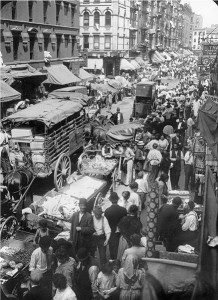
"The swindler was young and had a sandy mustache. He admired the vendor's pears and ordered him to put up two dozen."
If you wanted to witness mayhem during the 1890s in New York, all you had to do was stand near a street vendor and a crime wave was sure to develop. Five brief articles from the Brooklyn Daily Eagle illustrate this point.
••••••••••
“A Weight as a Weapon” (September 21, 1896): “Judel Cohen, the proprietor of a fruit store at 449 Rockaway avenue, was found guilty of an assault on Herman Masyr this morning. Masyr is the driver of a baker’s cart for George Geisler at 451 Rockaway avenue, next door to Cohen’s place. On August 31, about 3 o’clock in the afternoon Masyr drove his cart up to the front of the bakery. Cohen is also the possessor of a vendor’s stand and it was standing in front of his place loaded with fruit. The horse which Masyr drove selected the choicest of the fruit and began to feed. An argument followed and Cohen retreated to his store, where he picked up a pound weight. Returning to the front of the place he threw this at Masyr with such good aim that it stretched him unconscious on the sidewalk. Cohen fled and Masyr was put in the hands of an ambulance surgeon who sewed up the wound. Cohen stayed out of New York until yesterday, when he thought the affair had time to blow over. He was arrested at his store last night. Judge Harriman decided that he was guilty but suspended sentence.”
••••••••••
“An Italian Brained with a Shovel” (May 24, 1894): “Felice Pienzi, an Italian fruit vendor, had his skull fractured by the blow of a shovel wielded by Frank Lense, also an Italian, living in the same house with Pienzi at 155 Twenty-fifth street, this morning. The two men quarreled over a trifling money matter. The injured man was taken to the Seney hospital. His assailant followed him to the hospital in charge of an officer for identification. Pienze cannot recover.”
••••••••••
“He Lost His Temper” (November 1, 1891): “An Italian chestnut vendor named John Gamma, living at 45 New Bowery, New York, was held for trial in Essex Market police court by Police Justice Ryan, on a charge of stabbing. Gamma keeps his chestnut stall at the corner of Avenue C and Fifth street. Of late he has been greatly annoyed by a number of small boys assembled round his stand. On this day they began teasing him. The young Italian became infuriated and drawing an ugly looking pocket knife, stabbed one of the tormentors named Jacob Morris, 12 years of age, of 58 Avenue C, in the left arm, inflicting a slight injury.”
••••••••••
“Assaulted a Greek” (March 15, 1898): “Petro Paizalos, a Greek peanut vendor of 923 Atlantic avenue, charged John Dolan of 92 Bergen street, and John F. Fitzgerald of 68 Bergen street, with assault in the Flatbush court this morning. Both prisoners were held by Magistrate Steers for the Court of Special Sessions. A week ago the complainant, in company with another vendor, were walking on Clinton avenue when the two defendants, riding in an express wagon, are said to have attempted to run down Paizalos. A fight followed, in which Dolan is alleged to have struck the Greek with an iron bar, while Fitzgerald struck him with a brick.”
••••••••••
“The Fruit Man Was Swindled” (July 29, 1893): “An Italian fruit vendor who was stopped, to his loss, for a minute or two last night in front of the municipal building, was a victim of a clever but petty confidence man. The swindler was young and had a sandy mustache. He admired the vendor’s pears and ordered him to put up two dozen.
Then he asked the peddler to give him change for a two dollar bill minus the price of the pears, and disappeared with the cash and the fruit, saying that he would return in a minute with the two dollar bill. He left he vendor at the Joralemon street entrance and disappeared through the rear door leading to Livingston street, taking the pears and the change with him. Several headquarters detectives, who unconsciously witnessed the transaction, failed to find any trace of the swindler when wanted by the peddler.
••••••••••
Fruit vendors, Lower East Side, 1903:
Opening of John Donvan and Caren Zucker’s excellent 2010 Atlantic article about 77-year-old Donald Gray Triplett, the first person to ever be diagnosed with autism:
“IN 1951, A Hungarian-born psychologist, mind reader, and hypnotist named Franz Polgar was booked for a single night’s performance in a town called Forest, Mississippi, at the time a community of some 3,000 people and no hotel accommodations. Perhaps because of his social position—he went by Dr. Polgar, had appeared in Life magazine, and claimed (falsely) to have been Sigmund Freud’s ‘medical hypnotist’—Polgar was lodged at the home of one of Forest’s wealthiest and best-educated couples, who treated the esteemed mentalist as their personal guest.
Polgar’s all-knowing, all-seeing act had been mesmerizing audiences in American towns large and small for several years. But that night it was his turn to be dazzled, when he met the couple’s older son, Donald, who was then 18. Oddly distant, uninterested in conversation, and awkward in his movements, Donald nevertheless possessed a few advanced faculties of his own, including a flawless ability to name musical notes as they were played on a piano and a genius for multiplying numbers in his head. Polgar tossed out ’87 times 23,’ and Donald, with his eyes closed and not a hint of hesitation, correctly answered ‘2,001.’
Indeed, Donald was something of a local legend. Even people in neighboring towns had heard of the Forest teenager who’d calculated the number of bricks in the facade of the high school—the very building in which Polgar would be performing—merely by glancing at it.” (Thanks Longform.)
••••••••••
Tags: Caren Zucker, Donald Gray Triplett, Franz Polgar, John Donvan
Early computer chess, among other cool stuff.
Opening paragraph of Edward Chancellor’s new Wall Street Journal article about China’s booming yet precarious economy:
“In 1974, the future Chinese premier Deng Xiaoping led a large delegation to the United Nations in New York. Chinese officials discovered, as they prepared for the expensive trip, that the could muster only $38,000 in foreign cash. In those days there were no banks in China except the People’s Bank of China, then a department of the Ministry of Finance. Today China’s foreign-exchange reserves are fast approaching $3 trillion, and its banks are among the world’s most valuable companies. This remarkable success story has occurred against a background of more or less continuous worries about the stability of China’s financial system. Lately those concerns have been greater than ever.” (Thanks Marginal Revolution.)
Tags: Deng Xiaoping, Edward Chancellor
Wu Yang turns 70 this year. (Thanks Reddit.)


